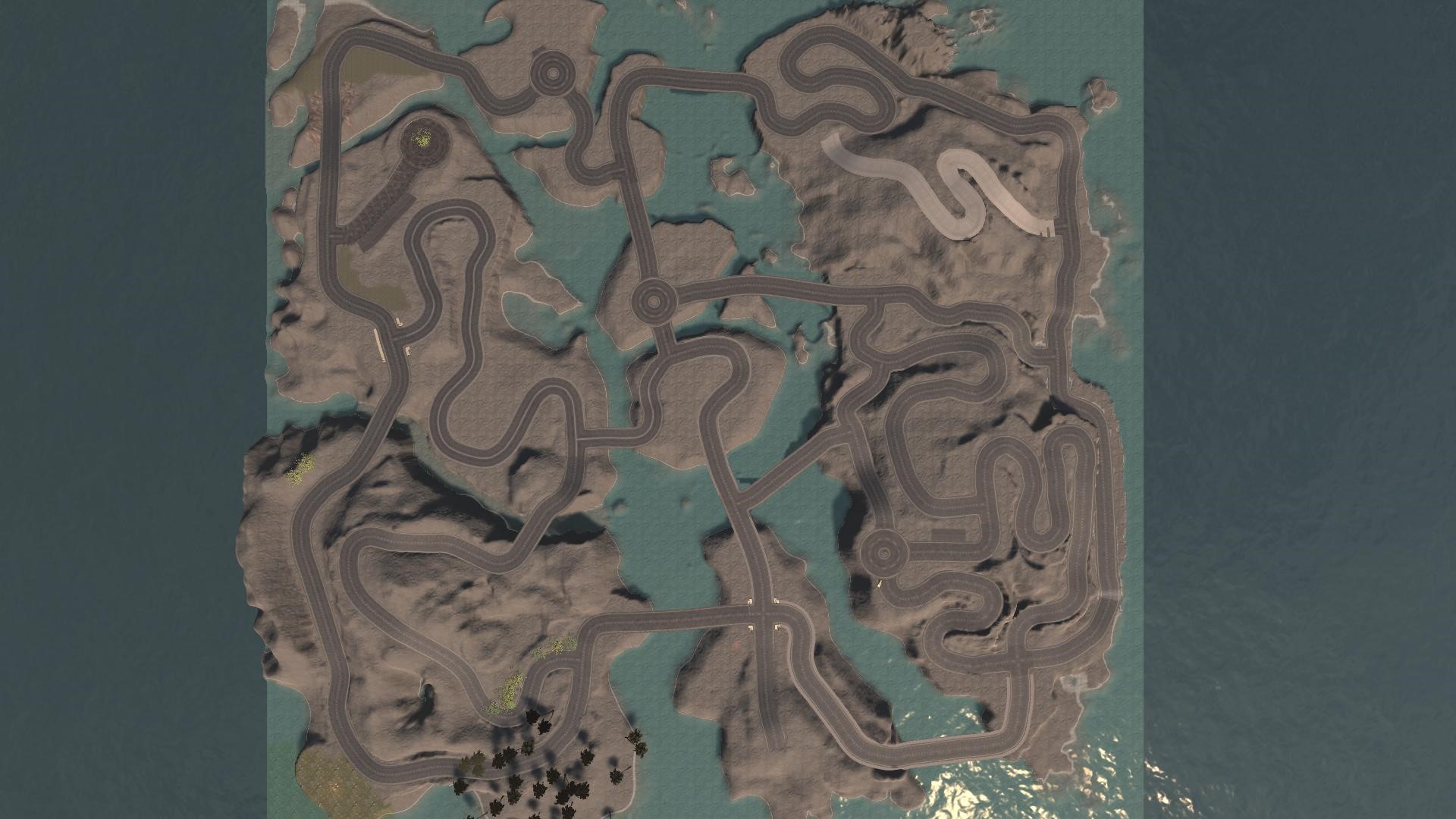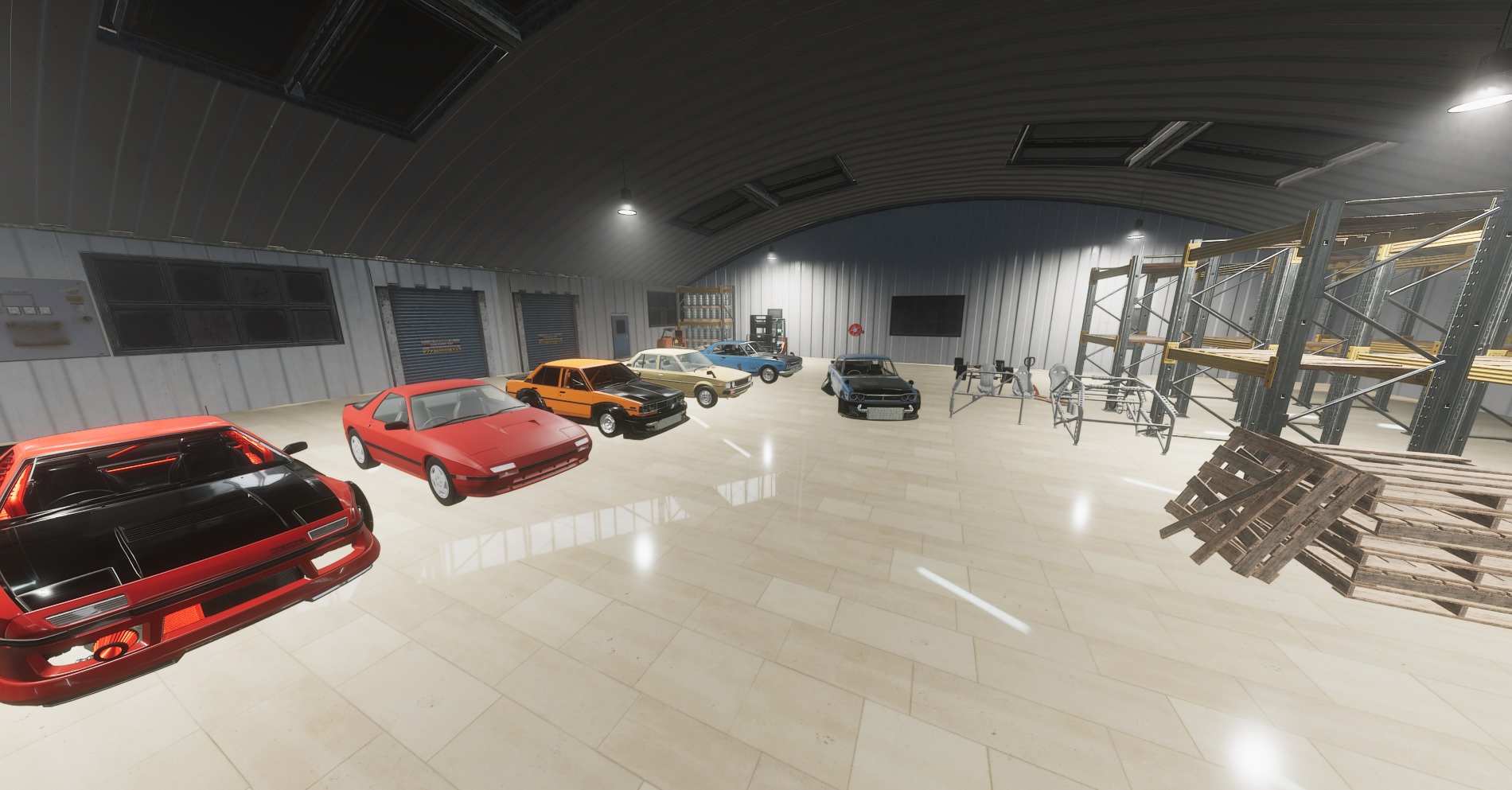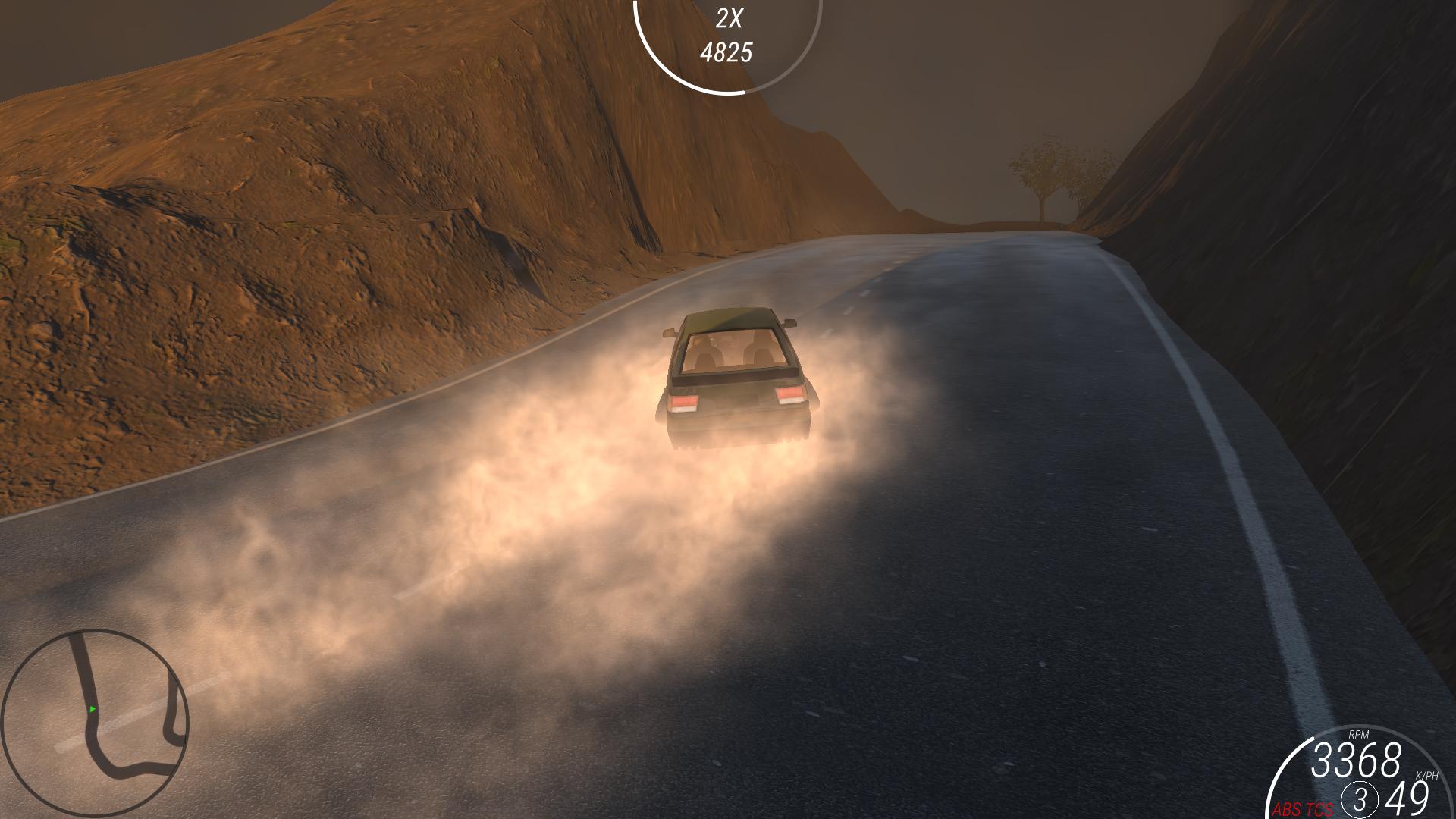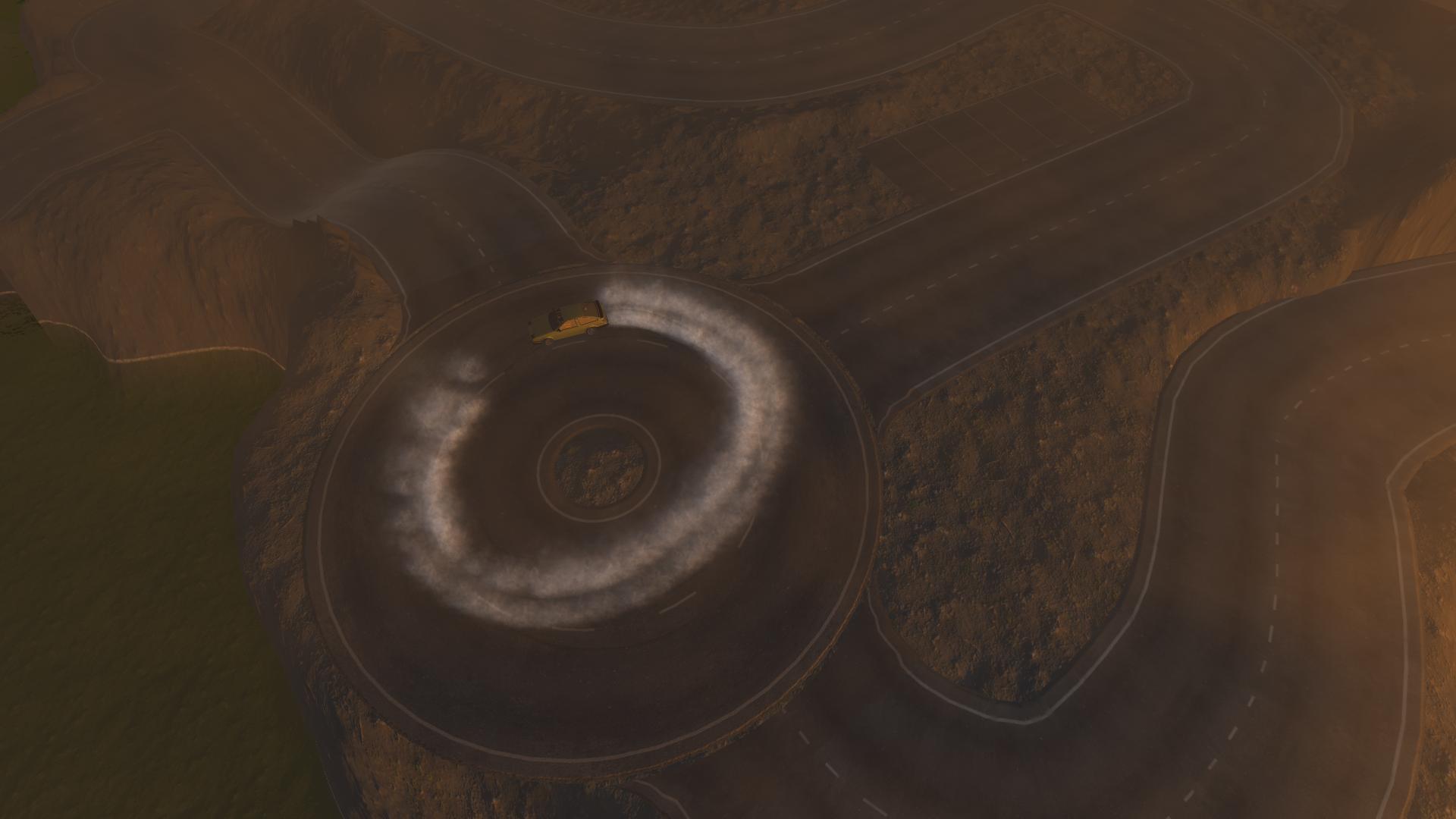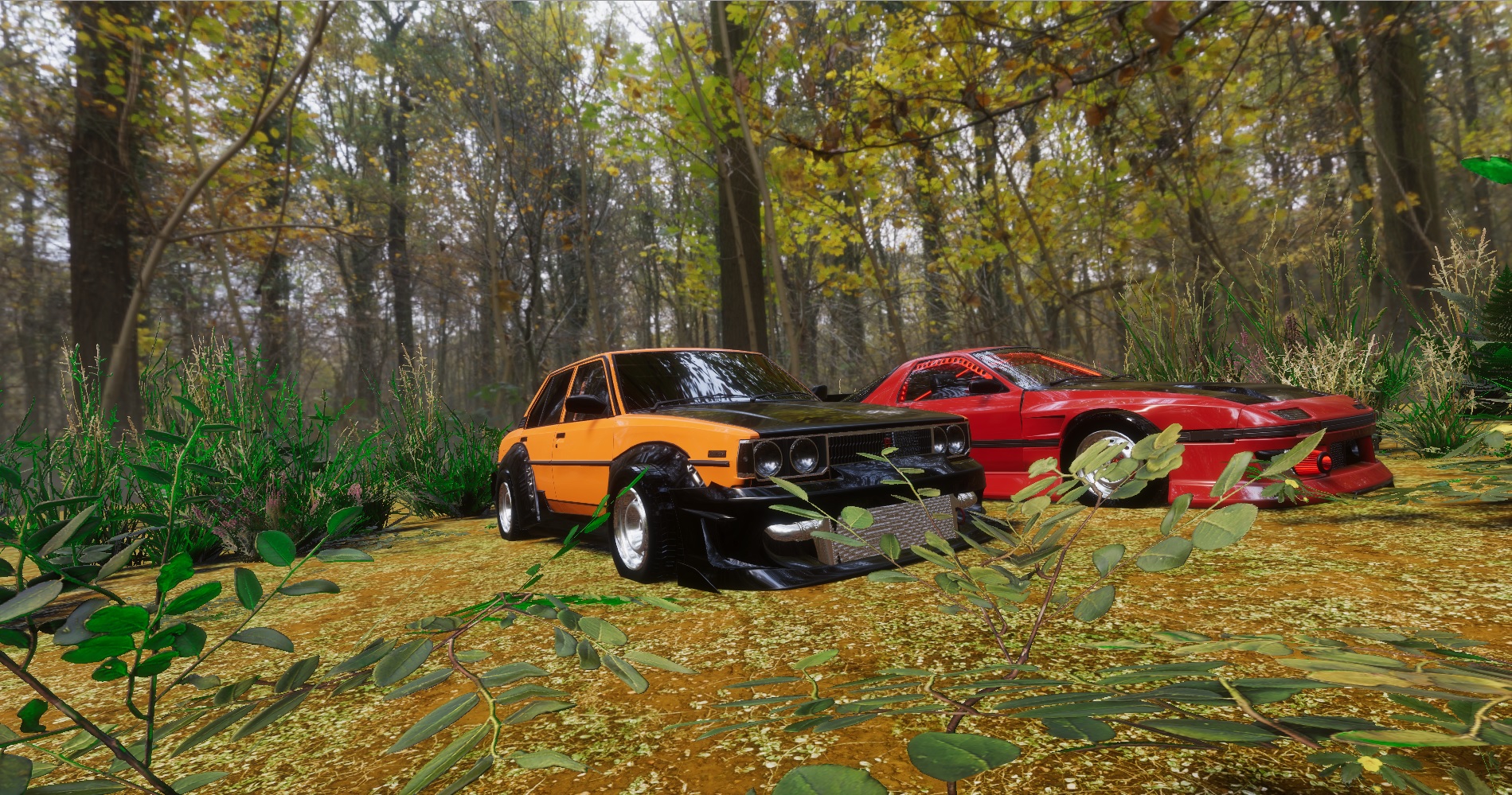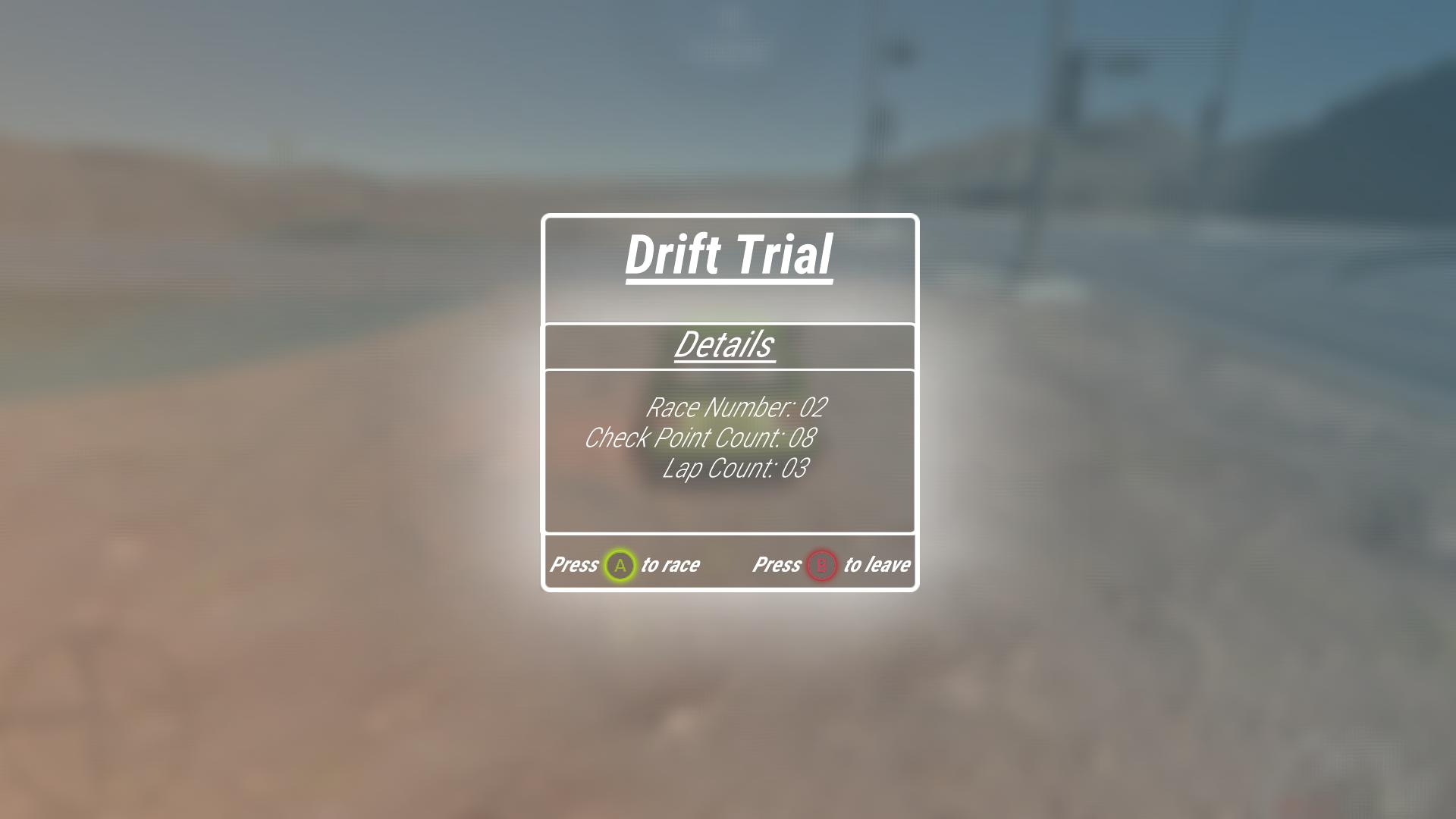About the Project
I developed Dorifuto as my final project within the 'PS4 Programming' class that is offered by MDS in your final year. It is developed as a multi-platform game, designed specifically for the PS4 but it works just as well on Xbox One and PC. I made the decision to do this project solo, although in hindsight it would have been awesome to work alongside someone else.
As a solo endeavor, it comes with certain limitations, but it still showcases two engaging racing genres and an impressive 3993.7 meters of driftable road. The map is currently devoid of objects, but various street features, such as roundabouts and intersections, are already in place, offering an exhilarating experience.
During the development process, I prioritized focusing on core elements, such as the driving system and interactions within the world, rather than the overall game-world, as I believed the latter could be addressed later. A significant portion of my efforts went into developing an accurate steering system, and in the alpha version, I successfully implemented a "steerAt" function that offered a level of accuracy comparable to some AAA driving game titles. This feature allowed me to manipulate the vehicle's trajectory, simulating real-life experiences, such as the loss of traction at low velocities, leading to rotation or trajectory changes based on the current position of the steering wheels' rotation axis.
During one of my second-year classes, I undertook the task of converting a '.bmp' file to a Terrain object within OpenGL using C++, even though Unity already offered the same flexibility within their Terrain object. My primary objective was to hand-craft the map without relying on real-world or AI generated terrain. By taking this approach, I gained the flexibility to make informed decisions regarding the placement and scale of mountains, bodies of water, and other distinctive features.
While this method empowered me to create a truly unique and personalized map, it did pose certain challenges, particularly when integrating roads within the custom terrain. Despite the complexities, the end result justified the efforts invested, offering a map with an unparalleled level of detail and character. To achieve the desired outcome, I had to meticulously address stitching and make necessary adjustments, ensuring a seamless and immersive gaming experience for players exploring the terrain I had meticulously crafted.
Thorough testing was essential for the map, and while I enjoyed drifting around the final product, I recognized the need to implement a game aspect. Thus, I developed a dynamic collision trigger system, which integrated with a race system offering two race types. The system involved camera fading in and out at the beginning of the race, with players required to pass through various check-points to progress. Missing a check-point resulted in a significant penalty.
One of the most vital systems was the gearbox, where I aimed to replicate the real-life experience of manual or automatic gearboxes. Surprisingly, this aspect was relatively straightforward and enjoyable to work on. I incorporated a clutch system that functioned similarly to a real car, as well as gear ratio systems to prevent instantaneous shifts from low to high gears without delayed response within the engine. Coupled with an intuitive UI, this system contributed to a more realistic feel in the game.
In choosing the appropriate pipeline, I opted for the LWRP during the development phase, as the HDRP was still in its early beta stages. However, in the summer of 2019, I made the decision to transition to the HDRP pipeline, which offered remarkable graphical improvements, significantly enhancing the overall look and feel of the game
-
Date
June - October 2019
-
Client Name
Benjamin Julian Pointer
